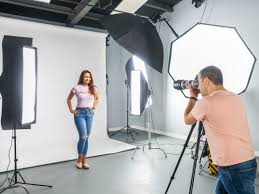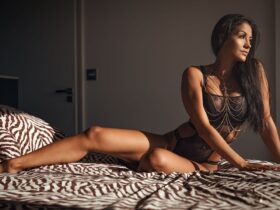Studios today are evolving into multi-purpose creative environments. With content demands rising, photographers, videographers, and audio professionals increasingly share the same workspaces. Instead of maintaining separate rooms or renting external facilities, many professionals are designing hybrid studios that accommodate multiple forms of production. This approach allows for streamlined workflows, cost efficiency, and consistent creative control. However, building a hybrid studio requires more than simply placing lights, microphones, and cameras in one room. It demands intentional planning, structured zoning, and a deep understanding of how light, sound, and movement interact.
The Core Purpose of a Hybrid Studio
A hybrid studio is designed to handle several types of content creation without compromising quality. It must support seamless transitions between photography shoots, video recording sessions, podcast or voiceover work, and post-production editing. This structure benefits agencies, freelancers, and in-house production teams who need to deliver dynamic content across multiple platforms. Rather than functioning as a “jack-of-all-trades” space, the hybrid studio should feel custom-tailored to each task, ensuring professional-level output every time.
Spatial Planning and Functional Zoning
One of the most important factors in developing a hybrid studio is dividing the room into purposeful zones. This helps maintain workflow efficiency and avoids equipment interference.
Primary Shooting Zone
This area focuses on photography and video work. The space should be open, uncluttered, and easy to reconfigure. Moveable backdrops, ceiling or wall-mounted lighting, and modular stands allow for quick transitions between shoots. Neutral wall colors and non-reflective surfaces help control stray light and maintain color consistency.
Audio Recording Zone
Audio work requires acoustic treatment rather than visual space. Even a small portion of the room can serve as a recording zone when properly treated. Use acoustic foam, bass traps, carpets, and sound-diffusing panels to reduce reflections and ensure clean sound capture. A portable vocal booth or treated corner can make a significant difference in quality without requiring large square footage.
Editing and Review Station
Post-production deserves a dedicated workspace separate from the active shooting zone. This prevents distractions and protects equipment. Use color-calibrated monitors, proper desk lighting, studio monitor speakers, and an ergonomic layout. This station becomes the quality control center where final results take shape.
Lighting Systems for Multi-Purpose Production
Lighting is where hybrid studios face their biggest challenge. Photography lighting is often high-intensity and controlled, while video requires consistent, continuous illumination. A hybrid setup must accommodate both without constant reconfiguration.
Adjustable Lighting Fixtures
Use lighting fixtures capable of switching between flash and continuous modes, or maintain both flash strobes and continuous LED panels. Look for:
-
CRI ratings of 95+ for accurate color rendering
-
Adjustable color temperature to match different scenes
-
Soft modifiers like large softboxes and diffusers that work across mediums
Ceiling-Mounted or Rail Lighting
Mounting lights on ceiling rails or wall booms reduces floor clutter. It also speeds up shoot setup time and helps maintain consistent lighting across sessions.
Acoustic Considerations and Sound Treatment
Since video and audio recording are central to hybrid studios, sound management must be handled intentionally. Even small noises can ruin professional recordings.
Acoustic Treatment Strategies
-
Add absorption panels to minimize echoes.
-
Use bass traps in corners where low-end frequencies collect.
-
Install thick carpeting or rugs to reduce floor reflections.
-
Seal doors and windows to block external sound.
Isolation for Voice Work
If budget and space permit, consider:
-
A small isolation booth
-
A DIY acoustic partition with movable panels
-
A dedicated corner treated with foam and diffuser blocks
The goal is not absolute silence, but a controlled acoustic environment suitable for clean recording.
Equipment Selection with Multi-Function in Mind
A hybrid studio operates best when equipment is versatile, durable, and easy to reposition.
Cameras and Lenses
Choose cameras capable of both high-resolution photography and professional 4K+ video recording. A hybrid setup may include:
-
Full-frame mirrorless cameras
-
Lenses with quiet autofocus motors
-
External monitors for video framing
Audio Gear
Clean audio matters more than most people realize. Include:
-
Directional shotgun microphones
-
Large-diaphragm condenser microphones for voice work
-
Audio interface with high-quality preamps
-
Studio monitor headphones and speakers
Workflow Accessories
-
Cable management systems
-
Rolling carts for mobile gear setup
-
Labeling for fast organization
Efficiency reduces creative fatigue.
Designing a Flexible Workflow
A hybrid studio thrives on adaptability. Build processes that allow quick transitions between tasks without full teardown or re-setup. Label equipment zones, maintain backup batteries and memory storage, and define a consistent scheduling structure for different types of work. The goal is to preserve creative flow and minimize downtime.
Maintaining a Professional Creative Environment
A clean, organized studio fosters productivity and enhances client perception. The studio should feel intentional and professional, not like a storage space. Regular maintenance, dust control, equipment calibration, and updated backup systems contribute to long-term studio success.
FAQs
1. Can a small room still work as a hybrid studio?
Yes, with strategic zoning and acoustic treatment, even compact spaces can support hybrid workflows.
2. What is the biggest mistake in designing multi-purpose studios?
Trying to cram in too much equipment without planning functional zones.
3. Should audio recording be separated from video and photography areas?
Ideally yes, but proper acoustic treatment can allow shared spaces to function well.
4. How important is ceiling-mounted lighting?
It is extremely valuable for freeing floor space, improving safety, and speeding up setup.
5. Can one camera handle both photography and videography needs?
Yes, if the camera offers strong still and video performance, especially in low light.
6. What is the best flooring for hybrid studios?
Soft, non-reflective, sound-absorbing flooring like carpet or rubber-based studio flooring.
7. How often should equipment be recalibrated?
Monitors and cameras should be recalibrated every 1–3 months, depending on use volume.










